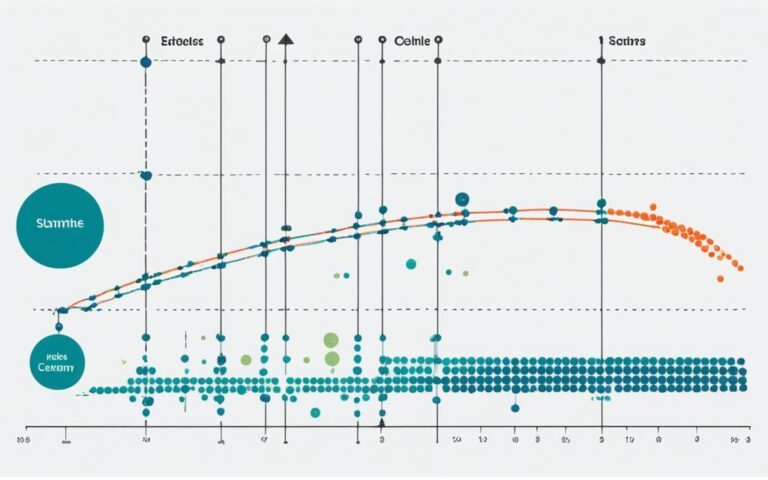The Debate on Remote Work: Oppugning Productivity Myths
Remote work has revolutionized the way we work, providing flexibility and freedom for individuals and companies alike. However, amidst the rise of remote work, a cloud of productivity myths has gathered, obscuring the truth about its effectiveness. It’s time to debunk these myths and uncover the reality of remote work productivity.
So, you may ask, what are these productivity myths that have infiltrated our minds? Picture this: the idea that remote workers laze around in their pajamas, binge-watching Netflix instead of being productive. Oh, the horror!
But fear not, for the truth is far from those misguided myths. Remote work, when embraced and managed effectively, can be a catalyst for digital efficiency. It’s time to separate fact from fiction, and uncover the potential and truth behind remote work.
In this article, we will dive deep into each myth and debunk it with gusto. From the myth that remote workers are less productive to the notion that remote work stifles collaboration, we will confront these fallacies head-on. Prepare to have your productivity mindset transformed!
Together, let’s challenge the misconceptions and embrace the reality of remote work. It’s time to unlock the true potential of remote work, increasing productivity, fostering collaboration, and paving the way for digital efficiency.
Myth: Remote workers are less productive
Remote work has been plagued by a common misconception that remote workers are less productive compared to their in-office counterparts. This myth, however, couldn’t be further from the truth. Research and studies consistently show that remote workers are not only productive, but often surpass the performance of traditional office employees.
“The idea that remote workers are less productive is a fallacy,” states a report by Stanford University. According to the study, remote workers benefit from reduced distractions and a conducive work environment that allows them to focus on their tasks with greater efficiency.
So, why is it that remote workers tend to be more productive?
First and foremost, remote workers often have more control over their schedules. Without the constraints of a traditional office setting, they have the flexibility to optimize their productivity during their most productive hours, resulting in enhanced output. Additionally, the absence of commuting time allows remote workers to invest that time in their work, leading to improved efficiency.
Increased autonomy, reduced distractions
In an office environment, distractions are inherent. From impromptu meetings to colleague interruptions, the productivity of in-office workers can be easily hampered. Remote workers, on the other hand, have the freedom to create a space conducive to focus and productivity. As a result, they experience decreased interruptions, enabling them to operate at peak performance levels.
Embracing a healthy work-life balance
Remote work offers the opportunity to establish a healthy work-life balance. By eliminating the need for long commutes and rigid office hours, remote workers have more time and energy to dedicate to both their professional duties and personal lives. This balance is conducive to increased productivity and overall satisfaction, as individuals can minimize stress and optimize their well-being.
In conclusion, the myth that remote workers are less productive is nothing more than a myth. Studies and real-world experiences consistently demonstrate that remote workers possess the ability to achieve high levels of productivity and performance. By debunking this misconception, organizations can embrace the remote work model and unlock its full potential to drive remote work productivity. Remote work offers numerous advantages that can contribute to the growth and success of both individuals and companies.
Myth: Remote work leads to decreased collaboration
Another common productivity myth is that remote work leads to decreased collaboration among team members. However, this myth fails to recognize the advancements in technology that have facilitated effective remote collaboration. With tools such as video conferencing, project management software, and instant messaging platforms, remote teams can collaborate seamlessly regardless of their physical locations. In fact, a study by Harvard Business Review found that remote workers are just as collaborative, if not more, than their in-office counterparts. This debunking of the myth highlights the power of virtual teamwork and the ability to foster collaboration in a remote work setting.
Embracing the Power of Remote Collaboration
Remote work has revolutionized the concept of collaboration, breaking down the barriers of location and enabling teams to work together effectively. The rise of virtual teamwork has proven that physical proximity is no longer a prerequisite for collaboration.
Advancements in technology have paved the way for remote collaboration to thrive. Video conferencing tools like Zoom and Microsoft Teams have made face-to-face communication possible, fostering a sense of connection and enhancing team dynamics. Project management software such as Asana and Trello provide platforms for teams to collaborate on tasks, assign responsibilities, and track progress in real-time. Instant messaging platforms like Slack and Microsoft Teams facilitate quick and efficient communication, enabling remote team members to stay connected throughout the day.
Moreover, these tools are complemented by the power of virtual teamwork. Remote teams often develop innovative ways to collaborate, leveraging digital platforms to exchange ideas, share files, and provide feedback. Through online brainstorming sessions, virtual whiteboarding, and real-time document editing, remote workers can actively contribute to team projects and foster a collaborative environment.
“Virtual collaboration is not limited by physical boundaries. It enables diverse perspectives and expertise to come together, transcending geographical limitations. Remote work has only strengthened our ability to collaborate effectively.”
– Emily Johnson, Senior Project Manager at XYZ Company
In fact, the dynamic nature of remote collaboration often leads to increased team collaboration. Virtual team members are more intentional and deliberate in their communication, ensuring that information is shared transparently and inclusively. Additionally, the asynchronous nature of remote work allows team members to have dedicated focus time, resulting in more thoughtful contributions and enhanced collaboration during team meetings and discussions.
As the workplace evolves, it is essential to break free from the misconception that physical proximity is the sole determinant of collaboration. Remote work has proven time and again that effective collaboration can thrive irrespective of where team members are located.
By embracing the power of remote collaboration, companies can tap into a global talent pool, leverage diverse perspectives, and empower their teams to work together seamlessly. The myth of decreased collaboration in remote work is a thing of the past; the reality is a collaborative and connected future.
Conclusion: Embracing the Reality of Remote Work
As we have explored the various productivity myths surrounding remote work, it becomes evident that embracing the reality of its benefits and advantages is crucial. Remote work offers a multitude of opportunities, from increased productivity to enhanced collaboration and improved work-life balance.
Dispelling the misconceptions about remote work allows individuals and companies to tap into its full potential. By understanding the truth about remote work, we can leverage the flexibility it provides to foster digital efficiency and success.
So, let us challenge these productivity myths and embrace the reality of remote work. Instead of being hindered by skepticism, let us recognize the remote work benefits and advantages it brings. Remote work empowers individuals to work in a way that suits their needs, unlocking their true potential.
Embracing remote work is not just a trend, but a necessity in today’s fast-paced and interconnected world. By enabling remote work, companies can attract top talent irrespective of geographical boundaries. Additionally, it fosters a diverse and inclusive workforce, enabling cross-cultural collaboration and ingenuity.
Together, let us embrace remote work and transcend the limitations of traditional office settings. Let us seize the endless possibilities it presents and unlock a future where productivity soars, collaboration thrives, and work-life balance is not just a dream but a reality.
FAQ
Are remote workers less productive compared to in-office workers?
No, remote workers tend to be more productive due to reduced distractions and a conducive work environment. They also have more control over their schedules, allowing them to optimize productivity.
Does remote work lead to decreased collaboration among team members?
No, advancements in technology have facilitated effective remote collaboration. Tools such as video conferencing, project management software, and instant messaging platforms enable seamless collaboration regardless of physical locations.
What are the benefits of remote work?
Remote work offers the potential for increased productivity, enhanced collaboration, and improved work-life balance. It allows individuals and companies to harness the full potential of flexible work arrangements for digital efficiency.










